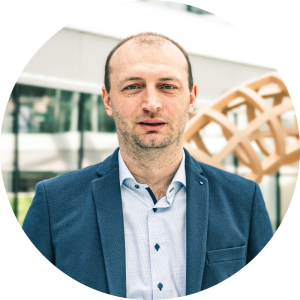As a topic for two generations of scientists, this time we chose the question of how they perceive ‘interregionality’ in the Czech Republic and whether they believe (as we do) that the conditions for ‘big science’ in the Czech Republic are not only in big cities, but also outside them. The answers show that science really knows no borders: neither international, nor regional ones. And so many take their experience gained in prestigious laboratories around the world back to smaller scientific communities in the regions, where career opportunities are generally comparable across the country, but life can be easier there…
-
Is it possible to do top-level research in the Czech Republic outside the capital city?
-
In what respects is work in the regions more difficult for scientists and what are its – possibly underappreciated – advantages?
-
What role should NICR play in linking research centres and their work across Czechia?
 Jiří Šána
Jiří Šána
Brno node, Faculty of Medicine and CEITEC MU
Focus on translational tumour genomics
- Certainly, and Brno clearly proves it. I, for instance, work at the Masaryk University, which supports research quite considerably, thus creating for researchers excellent conditions with the most advanced technologies. And one can observe similar support of research also in other research institutions in Brno. I dare say that the research conditions we have are comparable not only with Prague but with many international institutions. Moreover, I know that other research centres in the Czech Republic are capable of creating similarly good conditions. This is also attested in the distribution of support by Czech grant agencies, where a large part of resources goes to centres outside the capital.
- I personally do not think that scientists in the regions have less favourable working conditions that those in the capital. They can certainly benefit from the dynamic development of research infrastructures, which one can observe in recent years across the entire state. Moreover, The Czech Republic is small, which enables very close collaboration between various research institutions and smaller centres, including those located in Prague. Various ‘projects’, such as NICR, can play a very important role in this respect. Especially young scientists can profit from temporary internships at various institutions both in the Czech Republic and abroad; such experiences then widen their knowledge and skills. Regions can provide equally good opportunities – and this is attested by the fact that many senior scientists are, after many years spent at often highly prestigious institutes abroad, returning to regional centres.
- NICR has a great potential and should function as a platform for the sharing of data, technologies, know-how, and last but not least create an environment conducive to establishing contacts and collaborations between various research teams. Moreover, it should not only connect research efforts but also coordinate it on a national level and steer it in a direction that corresponds to Czech needs in the area of cancer research. This would ultimately accelerate research and lead to a more effective use of available financial resources. NICR should also support young scientists by training and workshops and help them communicate with other institutions, for instance about specialised internships.
 Elena Garcia Borja
Elena Garcia Borja
Prague node, Charles University, First Faculty of Medicine
Postgraduate student focused on cancer cell biology
- Yes, top-level research is possible outside the capital. Cities such as Brno and Olomouc have excellent universities and specialised research centres. They also have well-established collaborative networks that facilitate both national and international cooperation, creating a suitable environment for high-quality research. During a collaboration project, I had the opportunity to visit the Central European Institute of Technology (CEITEC) in Brno, where I was particularly impressed by the specialised expertise and the advanced equipment available. Research opportunities exist also in many other regional centres across the Czech Republic, which have state-of-the-art facilities and talented researchers.
- Young researchers in the regions sometimes face challenges such as limited international visibility, which can hamper their efforts to engage in collaborations and networking. Access to specialised facilities is another obstacle, because the main research hubs are typically in larger cities, such as Prague. On the other hand, these obstacles are also balanced by sometimes underestimated opportunities. Smaller research communities encourage stronger, more personal partnerships and collaborations, which enables young scientists to create influential networks on a local scale. Moreover, regional institutions can benefit from funding initiatives designed to promote research in those regions. That offers young researchers a unique chance to drive innovation and become leaders in their fields. And, on a different note, while life in a large city offers exciting opportunities and the opportunity to create many varied contacts, higher living costs can be a significant strain for young researchers who are trying to balance their professional and personal lives – and that is something that may be easier in the regions, outside the largest cities.
- NICR acts as a bridge connecting cancer research centres across the country. Its aim is to facilitate collaboration, share resources, and create a unified national cancer research network. NICR can enhance the visibility of regional efforts, provide essential funding, and offer a platform for knowledge exchange and innovation. By facilitating interdisciplinary collaborations and national partnerships, NICR plays a crucial role in strengthening cancer research in the Czech Republic.

